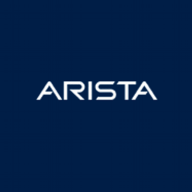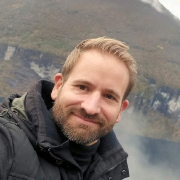

Arista NDR and Trend Vision One compete in the network detection and response category. Arista NDR appears to have the upper hand with its focused network analysis capabilities that offer detailed insights and anomaly detection.
Features: Arista NDR provides detailed network visibility, real-time traffic analysis, and a Security Knowledge Graph for visual insights. Its strength lies in anomaly detection using behavior-based machine learning. Trend Vision One offers comprehensive security across endpoints and networks, centralized management, and third-party tool integration, enhancing end-to-end threat detection.
Room for Improvement: Arista NDR can enhance its query language for new users and encrypted traffic analysis. Improving third-party tool integration would broaden its security architecture support. Trend Vision One could benefit from improved search functionality, a more intuitive user interface, and enhanced SOAR capabilities. Simplifying its complex features could increase user satisfaction.
Ease of Deployment and Customer Service: Arista NDR typically deploys on-premises, providing extensive on-site control suited for enterprises preferring localized data management. Its customer service is praised for responsiveness and swift resolutions. Trend Vision One supports cloud, hybrid, and on-premise deployments, beneficial for diverse infrastructures, though initial setup may involve complexity. Its support is recognized for effective communication.
Pricing and ROI: Arista NDR is competitively priced, often providing significant ROI through enhanced network security and resource savings. Its integration with managed services can optimize costs. Trend Vision One's pricing, reflecting its broad capabilities, might be considered high, yet its adjustable features and credit system permit cost control, presenting good value via centralized management, potentially lowering total cost of ownership.

Arista NDR (formerly Awake Security) is the only advanced network detection and response company that delivers answers, not alerts. By combining artificial intelligence with human expertise, Arista NDR hunts for both insider and external attacker behaviors, while providing autonomous triage and response with full forensics across traditional, IoT, and cloud networks. Arista NDR delivers continuous diagnostics for the entire enterprise threat landscape, processes countless network data points, senses abnormalities or threats, and reacts if necessary—all in a matter of seconds. The Arista NDP platform stands out from traditional security because it is designed to mimic the human brain. It recognizes malicious intent and learns over time, giving defenders greater visibility and insight into what threats exist and how to respond to them.
The Advent of Advanced Network Detection and Response & Why it Matters
Trend Vision One offers comprehensive protection for endpoints, networks, and email with centralized visibility. It is valued for its attack surface management, real-time threat detection, integrated management, ease of deployment, and user-friendly interface.
Trend Vision One provides a sophisticated security platform combining endpoint, network, and email protection with features like virtual patching and advanced AI capabilities. Its centralized management and integration with platforms like Office 365 and Azure make it an attractive option for organizations needing streamlined workflows and efficient risk management. While it boasts robust integrations and ease of use, enhancements are needed in reporting, tool integration, and reducing false positives. Users call for better support infrastructure, faster response times, and improved threat intelligence capabilities. Despite some complexity, its AI and ML features significantly enhance threat detection and response.
What Features Define Trend Vision One?
What Benefits Should Users Look For?
Trend Vision One is implemented in industries that require endpoint protection, ransomware defense, and incident response, being flexible for both on-premises and cloud environments. It is used to monitor servers, networks, and endpoints, providing features like email protection, behavioral detection, and threat visibility. Organizations benefit from AI and ML, improving their security posture and response capabilities.
We monitor all Network Detection and Response (NDR) reviews to prevent fraudulent reviews and keep review quality high. We do not post reviews by company employees or direct competitors. We validate each review for authenticity via cross-reference with LinkedIn, and personal follow-up with the reviewer when necessary.